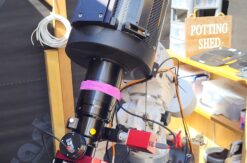Still not managed to get out and complete the polar alignment in the observatory – the weather has been it’s usual August pants! More cloud and rain than you could shake a stick at for the last few weeks, and the coming week shows a partial potential for Sunday 6th.
AAG Cloudwatcher
So, in the meantime I have been trying to set up my AAG Cloudwatcher – with limited success. The device monitors cloud coverage, rain, brightness and with an optional anemometer, the windspeed, and determines if the conditions are safe or unsafe. It has a relay built-in so (for example) unsafe conditions could cause the observatory roof to close and park the mount etc.
The limited success is down to the USB-Serial connection on the observatory computer. I have a Lindy cable which has a Prolific ship-set in it, but despite all attempts, the device does not respond to the software. I tested this with an older computer that has a built-in serial port and the device responds perfectly, so it’s definitely an issue with the cable, or the driver. I have tried updating the driver and also reverting to an older version (3.2.0.0) but no joy.
I am still testing, but I am sure I had this working before I installed the device to it’s final location – hope my memory is not playing tricks on me – but hopefully it will be a simple solution to use a different USB to Serial cable.
Steve Richards from The Chanctonbury Observatory made an observation that it could be the voltage swing difference between a USB cable and a ‘real’ serial port. Rigging up a test harness is easy enough – but I think I’d need an oscilloscope to measure the waves. Could be a fun thing to do…!
Image Analysis
One of the clever guys at SGL has written a piece of software to measure images and report all sorts of useful information. The software is called Astrophotography Lab and looks to be very useful.
As all imagers know, the quality of the data is paramount – the better the data, the less you have to do to it! So it strikes me as sensible to use a tool that tells me things like:
- Ideal exposure time
- Skyglow readings
- Gain and read-noise
Then I can adjust the imaging train, or camera settings, to get the best possible data.
I’ll keep a record of how this goes and will update accordingly

